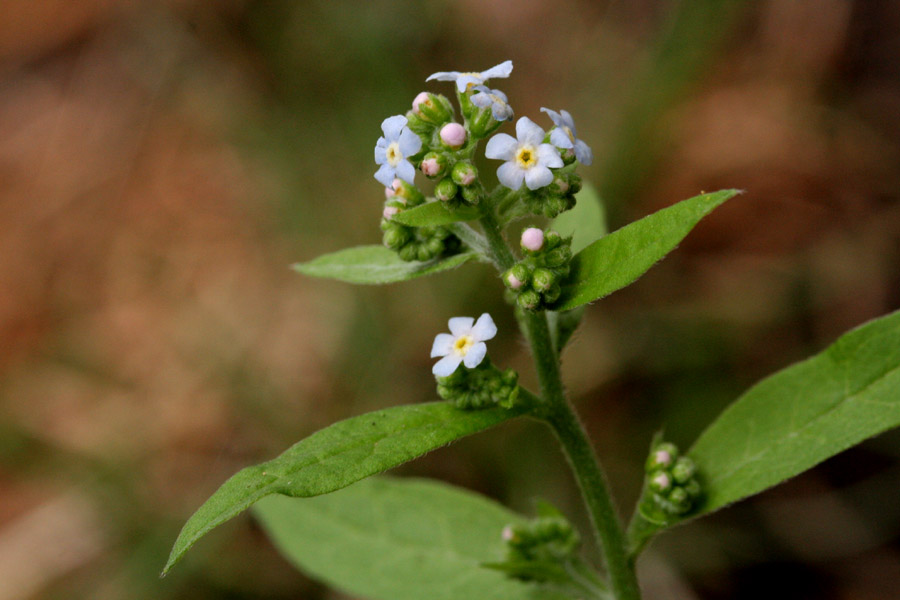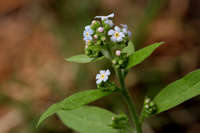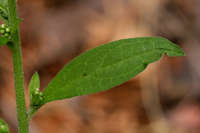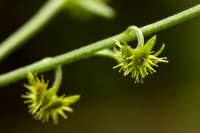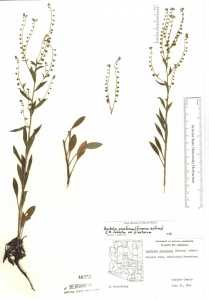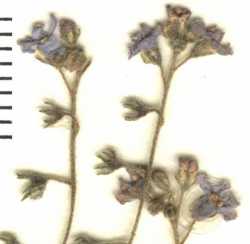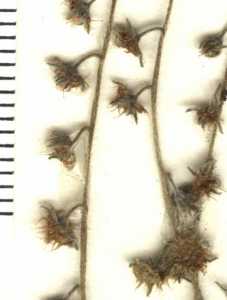Duration: Biennial
Nativity: Native
Lifeform: Forb/Herb
General: Slender biennial or perennial herbs from a woody caudex and taproot; stems erect to ascending and spreading; herbage with coarse, appressed to spreading hairs.
Leaves: Basal leaves early-withering, stem leaves alternate, all leaves petioled except uppermost stem leaves sessile; blades lanceolate, about 5 cm long, basal blades generally smaller than cauline.
Flowers: Blue and yellow, in scorpioid cymes these terminal and axillary on long peduncles; calyxes with 5 deep lobes, strigose with coarse appressed hairs; corollas rotate-salverform, blue with yellow centers.
Fruits: Nutlets 4, erect, free or fused, surfaces smooth to roughened, generally with barb-tipped prickles on the backs and margins.
Ecology: Found on moist soils in shaded areas, in the pi-on and pine belts, from 6,000-9,000 ft (1829-2743 m); flowers July-August.
Distribution: Arizona, New Mexico; Mexico.
Notes: This species is fairly uncommon. It is distinguished from others in the genus by having mostly appressed hairs on the stem; leaves with petioles (look especially at the leaves halfway up the stem); and prickles on the surfaces of the nutlets rather than only on the margins (PAlexander, 2012). H. floribunda is much more common; it has spreading hairs on the stem, and sessile cauline leaves (though the basal leaves have winged petioles.)
Ethnobotany: Unknown, but other species in the genus have uses and some are poisonous.
Etymology: Hackelia is named after Josef Hackel (1783-1869), Czech botanist, and pinetorum means of the pine forests.
Synonyms: None
Editor: LCrumbacher2012, AHazelton 2015


